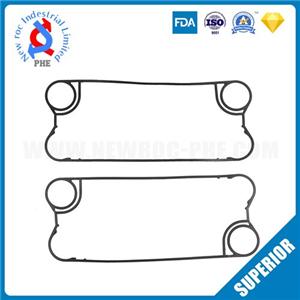Solutions to blockage and scaling of plate heat exchangers
If the plate heat exchanger is blocked and structured, the heat transfer coefficient of the heat transfer equipment will be reduced, and the heat transfer effect will be lost in severe cases. In response to this problem, the editor gave a brief description of them and gave the corresponding solutions:
Blockage
The plate heat exchanger has a small flow channel gap (2.5-6mm), and particles larger than 1.5-3mm in diameter can easily block the plate passages of the heat exchanger, which will sharply deteriorate the pressure drop of the equipment and cause the equipment to fail due to blockage. A rough filter or backwashing device can be installed at the media inlet as required to prevent the equipment from clogging.
Scaling
Fouling can block the passages of the heat exchanger plates. From the fluid mechanics point of view, fouling is easy to form in the fluid laminar layer, and the fluid in the plate heat exchanger can flow turbulently under a low Reynolds number (Re<100), so the equipment is not easy to foul. However, the analysis of the scale samples in the plate heat exchanger shows that the scaling phenomenon is sometimes serious. The plate is designed with a large number of supporting contacts, which are designed to disturb the medium (to make the medium flow turbulent to improve the heat transfer coefficient) and pressure support. It is a place where solid debris or fibers are easy to gather, and its bad effect It causes the fluid to form a local stagnation to generate dirt accumulations. After the calcium and magnesium ions in the medium precipitate at a suitable temperature, it is easy to adhere to the accumulations and grow up, forming honeycomb-like scales. Although clogging and fouling have different causes, the effects on plate heat exchangers are the same. The countermeasures are:
1. The plate heat exchanger is not suitable for use in dirty or fouling environments.
2. When unsoftened cooling water is used as the cooling medium, the operating temperature should be controlled at about 50°C to avoid the sensitive temperature of calcium and magnesium ion precipitation in the medium. For domestic hot water (bath water), it is necessary to design a relevant temperature control system to control the temperature of the outlet water (bath water is not allowed to be softened or treated with other chemical methods) before the equipment can be used normally.




